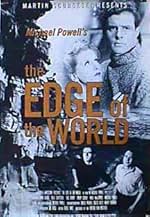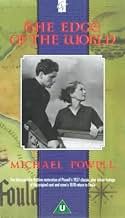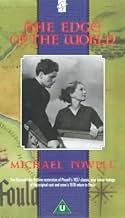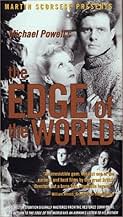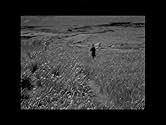VALUTAZIONE IMDb
7,3/10
2256
LA TUA VALUTAZIONE
Aggiungi una trama nella tua linguaA way of life is dying on a remote Scottish island, but some of the inhabitants resist evacuating to the mainland.A way of life is dying on a remote Scottish island, but some of the inhabitants resist evacuating to the mainland.A way of life is dying on a remote Scottish island, but some of the inhabitants resist evacuating to the mainland.
- Regia
- Sceneggiatura
- Star
- Premi
- 1 vittoria e 1 candidatura in totale
Niall MacGinnis
- The Gray Family: Andrew, His Son
- (as Niall Macginnis)
James Garrioch
- Doctor Attending Ruth's Baby in Lerwick
- (non citato nei titoli originali)
Andy Gear
- Villager in Evacuation
- (non citato nei titoli originali)
Mima Gear
- Villager in Evacuation
- (non citato nei titoli originali)
Wullie Gear
- Fiddler at Hirta Reel
- (non citato nei titoli originali)
Aggie Jean Gray
- Member of the Congregation
- (non citato nei titoli originali)
Agnes 'Nannie' Gray
- Member of the Congregation
- (non citato nei titoli originali)
Edith Gray
- Member of the Congregation
- (non citato nei titoli originali)
James Andrew Gray
- Member of the Congregation
- (non citato nei titoli originali)
Jean 'Jeannie' Gray
- Member of the Congregation
- (non citato nei titoli originali)
Recensioni in evidenza
It was very strange watching a film that was shot on an Island that I can see out of my living room window (on clear days).
The film touched on many issues that affected people of the Shetlands around that time, but you should glad hearted, because in REAL life the people of Foula (the REAL Island) still managed to survive, there are approx 30 people living on Foula (Pronouced "Fulla") at this time, and they now have (as from the end of 2004), for the first time 24 hour electricity! (previously only 15 hours a days worth).
Of course, none of the main characters are from Shetland, because they sound Scottish. (The Shetland accent is a mix of Scots and Norwegian Dialect), but the film does its best.. and people who lived in Shetland NEVER spoke Scottish Gaelic.. ever.. tho they did speak Danish before the 17th Century...
This film is available in the Shetland Libraries, and it is watched with much mirth by us... watch and enjoy!
The film touched on many issues that affected people of the Shetlands around that time, but you should glad hearted, because in REAL life the people of Foula (the REAL Island) still managed to survive, there are approx 30 people living on Foula (Pronouced "Fulla") at this time, and they now have (as from the end of 2004), for the first time 24 hour electricity! (previously only 15 hours a days worth).
Of course, none of the main characters are from Shetland, because they sound Scottish. (The Shetland accent is a mix of Scots and Norwegian Dialect), but the film does its best.. and people who lived in Shetland NEVER spoke Scottish Gaelic.. ever.. tho they did speak Danish before the 17th Century...
This film is available in the Shetland Libraries, and it is watched with much mirth by us... watch and enjoy!
A new version was reportedly released in 1978 ,featuring a color sequence where the director and the actors-survivors went on a pilgrimage to Foula.It was called "return to the edge of the world" .This is not the version I saw and it seems that none of the other users could see it either.It's really a pity.
Powell is my favorite English director.He's the only one who 's got a sense of mystery.His pictures are art,poetry in motion.He films the sea (a harsh mistress) and the desolate landscapes in a dazzling way.His influence on David Lean ("Ryan's daughter") is obvious.But I'm almost sure old wave French Jean Delannoy (not meant pejoratively) had this movie in mind when he made his own "Dieu a Besoin des Hommes" (a story in a remote Breton island ).And the almost documentary side of the movie predates Robert Bresson's asceticism.
Some called it melodramatic:on the contrary,Powell avoids its clichés; the unmarried mother became generally an outcast,most of all the French Marcel Pagnol films revolved around this subject.But Ruth's child is a new hope for the inhabitants.The sequence when they dance to a violin tune is the one really happy moment in the whole film.
The times are changing.The way of life their fathers used to know is coming to an end.Powell's movie gains an universal meaning :the situation he depicted happened (and is still happening) here there and everywhere.
Powell is my favorite English director.He's the only one who 's got a sense of mystery.His pictures are art,poetry in motion.He films the sea (a harsh mistress) and the desolate landscapes in a dazzling way.His influence on David Lean ("Ryan's daughter") is obvious.But I'm almost sure old wave French Jean Delannoy (not meant pejoratively) had this movie in mind when he made his own "Dieu a Besoin des Hommes" (a story in a remote Breton island ).And the almost documentary side of the movie predates Robert Bresson's asceticism.
Some called it melodramatic:on the contrary,Powell avoids its clichés; the unmarried mother became generally an outcast,most of all the French Marcel Pagnol films revolved around this subject.But Ruth's child is a new hope for the inhabitants.The sequence when they dance to a violin tune is the one really happy moment in the whole film.
The times are changing.The way of life their fathers used to know is coming to an end.Powell's movie gains an universal meaning :the situation he depicted happened (and is still happening) here there and everywhere.
10jotix100
Michael Powell, the distinguished English director, was a man of vision. He takes us on a voyage to a remote place in order to set his drama about what the inhabitants of the mythical Hirta, in the Hebrides, were going through. The film was actually filmed in Fulla, in the Shetland Islands, which resembles its model. The original island of St. Kilda had been deemed the last place on earth as the Romans sailed the area and since the island resembles a wall rising from the sea, it must have appeared that way to those explorers. Mr. Powell was lucky in working with the producer Joe Rock, whose generosity made this early film worth discovering.
The film opens with a shot of the island from the sea. We see the island rise from the water, as the Romans might have seen it. Little has changed in the place, except now it's deserted. The people of the island have long gone over the mainland because it was hard for them to make a living in that barren and inhospitable place. The island is now a bird sanctuary. The yacht is commandeered by Andrew Gray, who has left the place and now his memories of that turbulent past come back to him.
We go back in a flashback to know what happened in the island some time ago. We see the Manson family as they prepare for church. Peter, the patriarch, has two children, Ruth and Robbie. Andrew Gray is in love with the beautiful Ruth. Later in a competition to get to the top of the highest spot in the island Robbie suffers a tragic accident. Andrew decides to leave for the main land with his father's blessings, but Ruth is left with child, not knowing how to contact Andrew. When the whole population decides to leave, Peter Manson, reluctantly agrees, but tragedy intervenes when a terrible accident occurs.
The acting is magnificent. John Laurie is seen as Peter Manson, the man whose love for the land is his passion. Belle Chrystall plays Ruth the gorgeous island girl in love with Andrew. Eric Berry and Niall MacGinnis are Robbie and Andrew and Finlay Currie makes James Gray come alive.
"The Edge of the World" shows a Michael Powell in great form. Mr. Powell must have taken a tremendous chance by even filming in that remote place, but he is rewarded by a timeless film that will live forever.
The film opens with a shot of the island from the sea. We see the island rise from the water, as the Romans might have seen it. Little has changed in the place, except now it's deserted. The people of the island have long gone over the mainland because it was hard for them to make a living in that barren and inhospitable place. The island is now a bird sanctuary. The yacht is commandeered by Andrew Gray, who has left the place and now his memories of that turbulent past come back to him.
We go back in a flashback to know what happened in the island some time ago. We see the Manson family as they prepare for church. Peter, the patriarch, has two children, Ruth and Robbie. Andrew Gray is in love with the beautiful Ruth. Later in a competition to get to the top of the highest spot in the island Robbie suffers a tragic accident. Andrew decides to leave for the main land with his father's blessings, but Ruth is left with child, not knowing how to contact Andrew. When the whole population decides to leave, Peter Manson, reluctantly agrees, but tragedy intervenes when a terrible accident occurs.
The acting is magnificent. John Laurie is seen as Peter Manson, the man whose love for the land is his passion. Belle Chrystall plays Ruth the gorgeous island girl in love with Andrew. Eric Berry and Niall MacGinnis are Robbie and Andrew and Finlay Currie makes James Gray come alive.
"The Edge of the World" shows a Michael Powell in great form. Mr. Powell must have taken a tremendous chance by even filming in that remote place, but he is rewarded by a timeless film that will live forever.
An interesting film and well worth seeing for those interested in Scottish theme films. The comparison with Man of Aran is valid, in that it depicts an isolated island community struggling to eke out an existence.
What was missing for me was even a hint at the language these island people of "Hirta" would have spoken, Scottish Gaelic. The church scene with its psalm singing was executed better than in "The Little Minister", but still without making an effort to portray the real thing. The singing was in English, using a Lowland style and the precentor did not chant the line, but read it! They had clearly not visited any Highland churches before preparing the scene.
The documentary film, appended to this, "Return to the Edge of the World" was wonderful and I found it equally enjoyable.
What was missing for me was even a hint at the language these island people of "Hirta" would have spoken, Scottish Gaelic. The church scene with its psalm singing was executed better than in "The Little Minister", but still without making an effort to portray the real thing. The singing was in English, using a Lowland style and the precentor did not chant the line, but read it! They had clearly not visited any Highland churches before preparing the scene.
The documentary film, appended to this, "Return to the Edge of the World" was wonderful and I found it equally enjoyable.
This early effort by director Michael Powell is simply a stunning visual treat. Shot on location on one of the British isles,the visuals are both dramatic and beautiful.What amazed me was how different this movie was from others I've seen from the same period.It seemed so modern in the way of storytelling. The basic story of the film is quite predictable but the actors commitment heightens the drama's impact. John Laurie is the standout in the cast.But what lingers is the powerful depiction of the harsh life on these isles,constantly battling nature's forces.This movie is a cherished record of a way of life that now has almost completely disappeared. To fans of Michael Powell this is a must-see, and I recommend this amazing film to everybody.
Lo sapevi?
- QuizIn the scene of the race up the cliffs, the actors did their own climbing. According to director Michael Powell's book on the making of the film, Eric Berry in particular did some risky work indeed, especially in the shots of him clambering up the waterfall.
- BlooperThe wild Golden Eagle at the beginning has the falconer's jesses (leather straps) visible.
- Citazioni
The Gray Family: Andrew, His Son: Do you think I don't care about Robbie? Do you think I'd forget that he was your twin brother and my best friend?
- Curiosità sui crediti[before opening credits] The slow shadow of Death is falling on the outer isles of Scotland. [scrolls up] This is the story of one of them -- and all of them. When the Roman Fleet first sailed round Britain they saw from the Orkneys a distant island, like a blue haze across a hundred miles of sea. They called it - "ULTIMA THULE" [main title] THE EDGE OF THE WORLD
- ConnessioniFeatured in Ritorno ai confini del mondo (1978)
- Colonne sonoreChorus
(uncredited)
Composer unknown
Performed by The Glasgow Orpheus Choir
Conducted by Hugh S. Roberton
I più visti
Accedi per valutare e creare un elenco di titoli salvati per ottenere consigli personalizzati
- How long is The Edge of the World?Powered by Alexa
Dettagli
Botteghino
- Budget
- 20.000 £ (previsto)
- Tempo di esecuzione1 ora 21 minuti
- Colore
- Proporzioni
- 1.37 : 1
Contribuisci a questa pagina
Suggerisci una modifica o aggiungi i contenuti mancanti

Divario superiore
By what name was Ai confini del mondo (1937) officially released in India in English?
Rispondi
